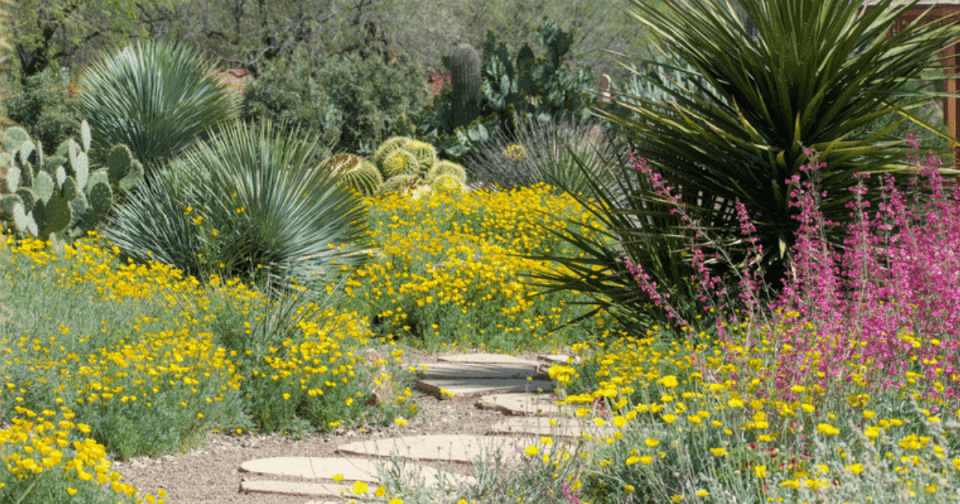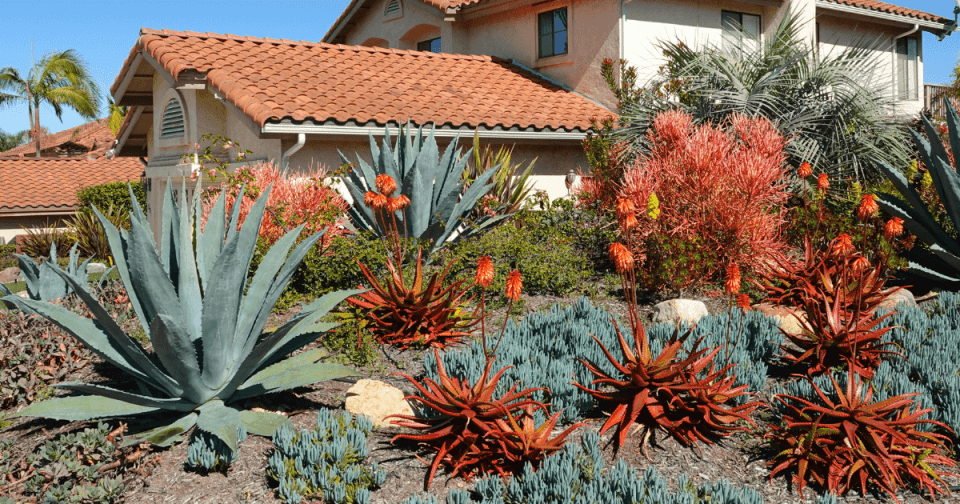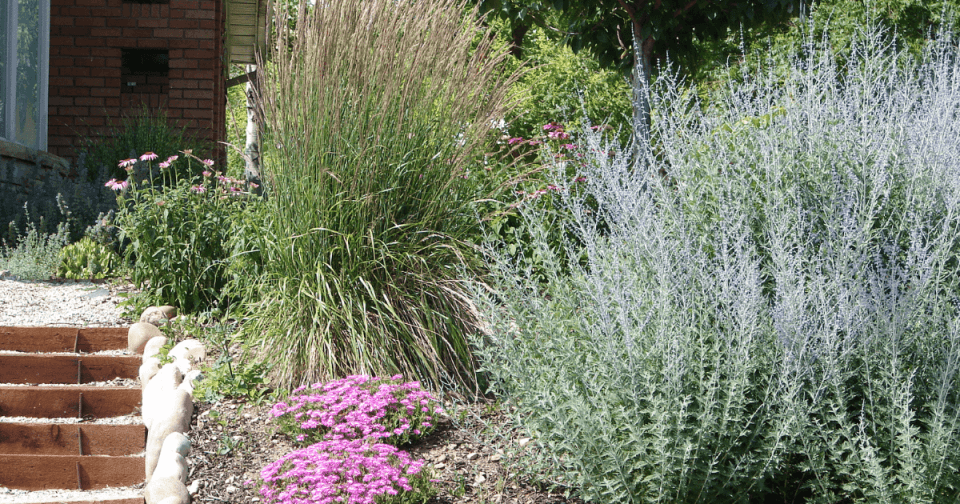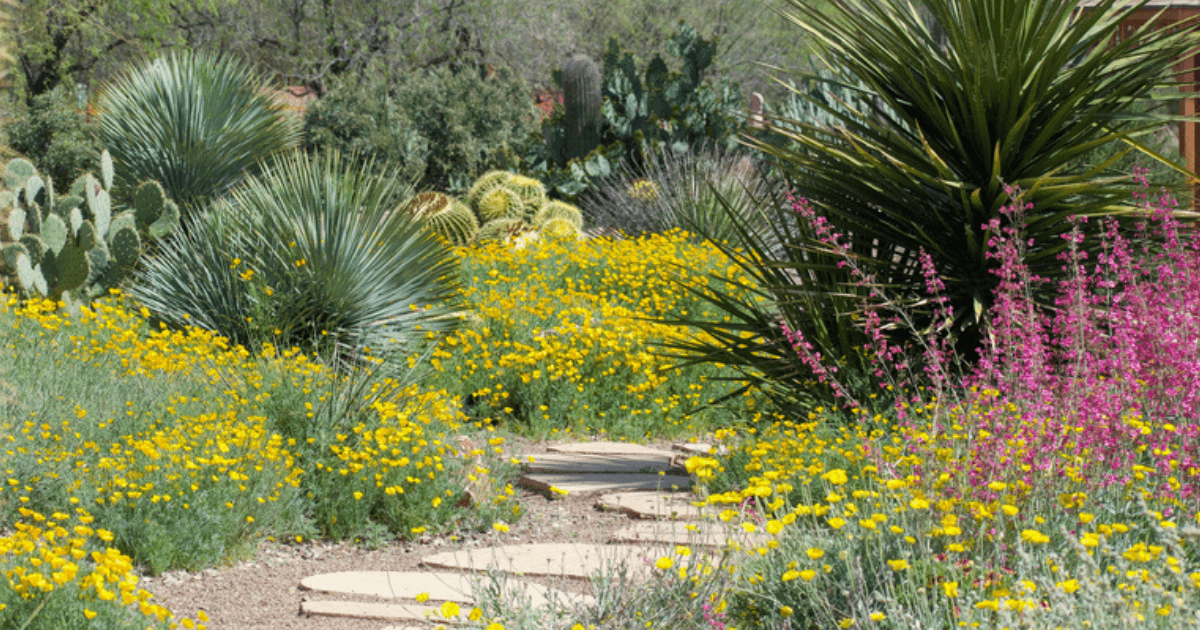Reading time: 5 minutes

Struggling to keep your landscape thriving in hot and dry conditions? Consider adding desert plants to your design! These plants are already adapted to our alkaline soils, scarce rainfall patters, and can withstand the scorching summer sun and heat. Not only are they resilient, but many desert plants bloom with an abundance of colors, creating a stunning visual display. If you’re looking for a low-maintenance yet colorful landscape, it’s time to start considering desert plants.
What is a desert plant?
All desert plants have at least one of three defining characteristics:
- Succulence – Fleshy leaves, stems, or roots will absorb large quantities of water quickly and store it for future use.
- Drought-tolerance – These plants can withstand desiccation without dying by shedding leaves during dry periods and entering a deep dormancy.
- Drought-avoidance – desert annuals will mature in a single season and produce and abundance of flowers and seeds to improve chances of growth in the next season.
Another way that you might identify a desert plant is by looking at its leaves. Desert native or desert adaptive plants usually have at least one of the characteristics below:
- Small leaves – A smaller leaf will help the plant conserve water by reducing the surface area available for transpiration.
- Light-colored leaves – Plants with lighter leaves (sometimes gray or silvery) will aid the plant in reflecting intense light and heat away from its surfaces, reducing its overall temperature.
- Textured leaves – Fuzzy, leathery, or waxy leaves create a larger barrier for water to pass through before transpiring, helping the plant to reserve more water.

How do I get started?
When adding desert plants to your landscape, you’ll want to prepare the area before planting. To make sure your desired area is a good spot for your new plant, check to make sure there is good drainage and follow proper planting procedures. For more information on how to plant, read Star Note #001 – Planting Guide!
There are many varieties of trees, shrubs, vines, accents, grasses, and groundcovers that are well suited to our desert climate. With many sizes, shapes, textures, and colors available, you can mix and match to design a landscape that is most appealing to you. For a complete list, view Star Note #530 – Reliable Plants for Hot & Dry Climates.

Incorporating desert plants into your landscape is an excellent way to create a vibrant, low-maintenance garden that can help you save on your water bill! When planting in the desert, you do not need to forgo beauty and color… Stunning and sustainable landscapes are achievable just by working with what our natural environment has provided for us!
Follow us for the latest gardening news and updates!
